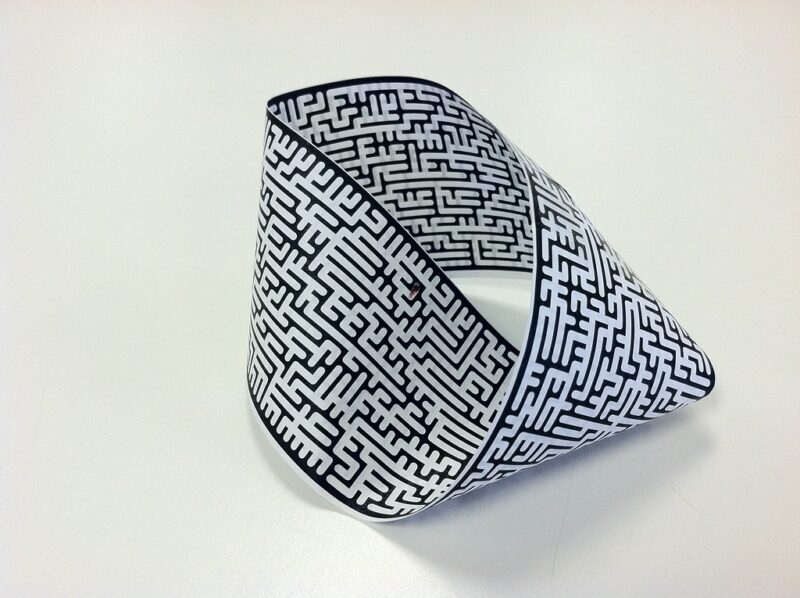The Loop Collaboratory (or “Loop Lab”) is an arts project at George Mason University that partners artists and writers to create collaborative works. Loop Lab takes the notion of the loop as a starting point: feedback loops, strange loops, mobius loops, tangled loops. Loops fasten us together, are circuits of exchange, and trouble the idea of origin and destination. In participating in the Loop Lab, artists will work in partnership through all steps of the creative process, making new work in response to each year’s theme. Through a process of experimentation and recursive relationship, participants return to their own practices with fresh perspectives.
Origins
The Loop Lab grows out of a prior exhibition series, originated by artist Helen Frederick (Professor Emerita, School of Art) and poet Susan Tichy (Professor Emerita, Poetry). Call & Response paired MFA student writers and artists, asking “one participant to call and the other respond” with new or extant work. The exhibition was coordinated and curated by a rotating body of faculty, staff, and graduate students at Mason, including most recently Stephanie Grimm and Heather Green (Loop Lab co-coordinators). In many iterations, Call & Response drew attention to important issues of social justice, such as human trafficking. This collaborative program led to unexpected and exciting partnerships between artists and writers, culminating in work as varied as video and sound art, installation, and book arts.
Reckoning with Racial Inequities
Over the years since its inception, however, Call & Response’s scope as an MFA-focused exhibition has led to shortcomings and conspicuous absences. Though Mason has a highly diverse undergraduate student population, this diversity has not been historically present in the University’s MFA programs at the student or faculty levels. In particular, Black graduate students and faculty have been—and are currently—grossly underrepresented in the School of Art. Because Call & Response, under our guidance, continued to operate in this way and draw primarily on the Creative Writing and School of Art MFA programs, we perpetuated those inequities with an exhibition strategy that presented almost all non-Black artists and curators while employing a title that invokes and appropriates a cultural and musical tradition that is, in the US, primarily, an African and African-American tradition. More than simply a name change, the launch of Loop Lab represents a rethinking of the goals and structures of a collaborative creative program in the Mason community.
Path Forward
Placing the inclusion and support of historically marginalized groups at the forefront of all activities, the Loop Lab will continue to evolve. As Mason works to increase racial equity among faculty, staff, and graduate student populations, the Loop Lab will build on the strengths and diversity of Mason’s creative community at large, and, in particular, engage the undergraduate programs of Creative Writing and School of Art. While we are pausing the exhibition for 2022/2023 year to rethink the opportunities for collaborative arts work at Mason, when we return, student participants will be supported by the development of curricular programs led by a rotation of faculty/curators that represent the diversity of our student body and foster models for artistic development.
Writer and theorist adrienne maree brown observes: “How we are at the small scale is how we are at the large scale.” The Loop Collaboratory draws attention to how we, as artists, work together with patterns, loops, and iterations, and how those shapes replicate and reverberate, becoming energetic and potentially transformative.
